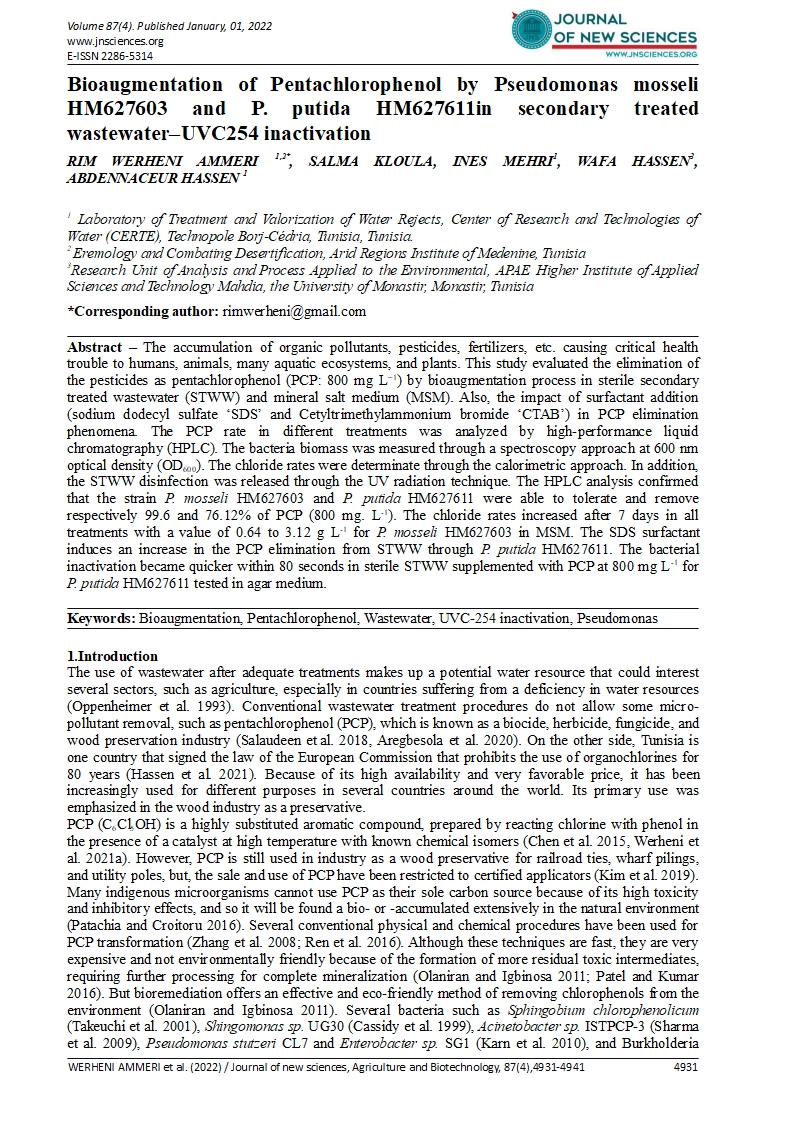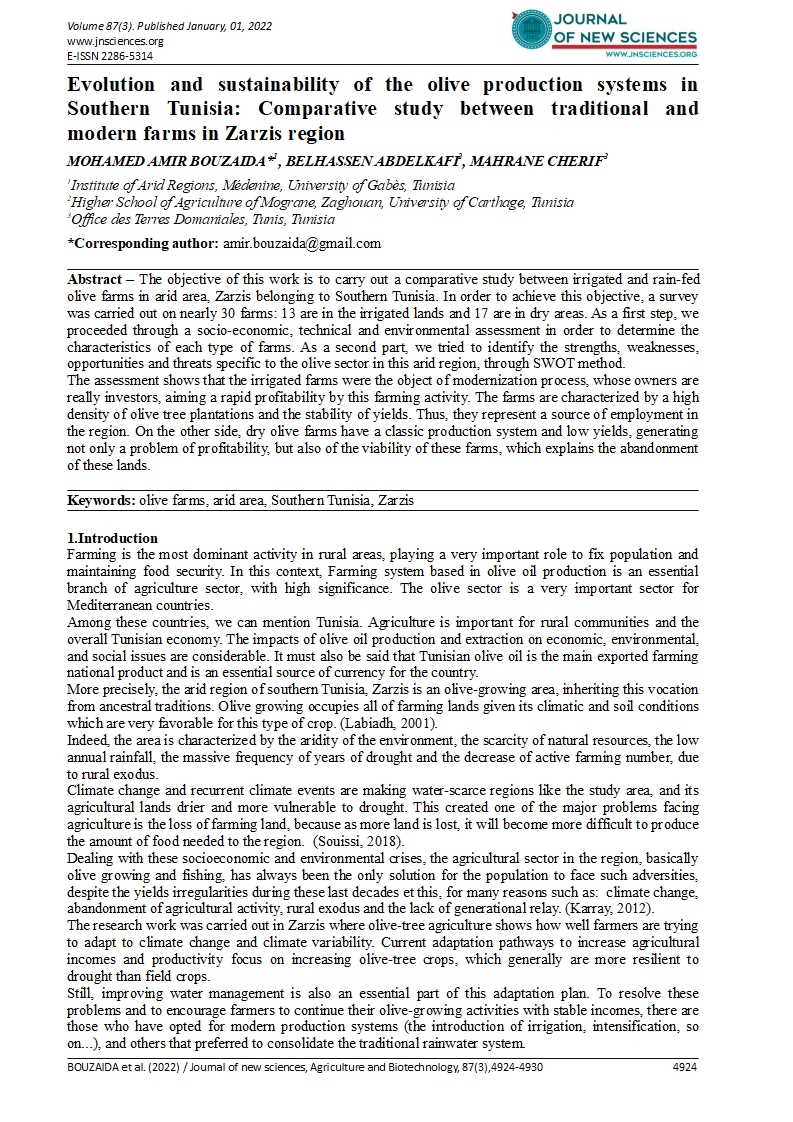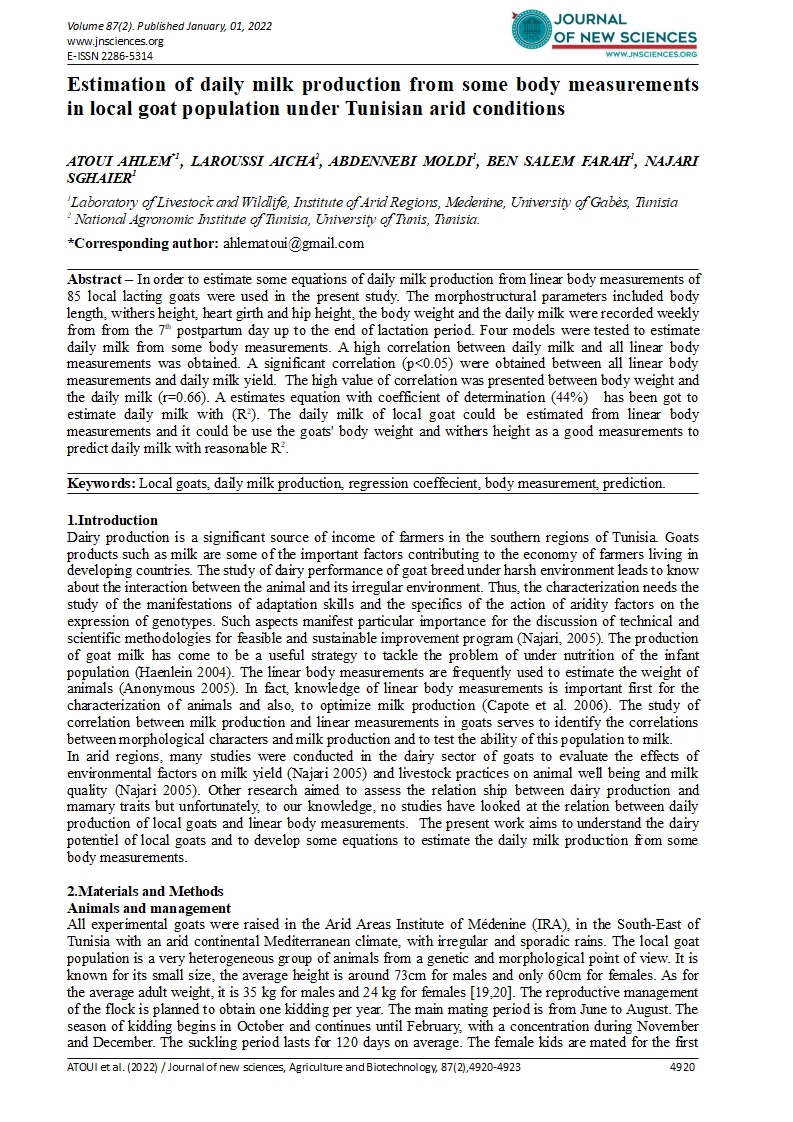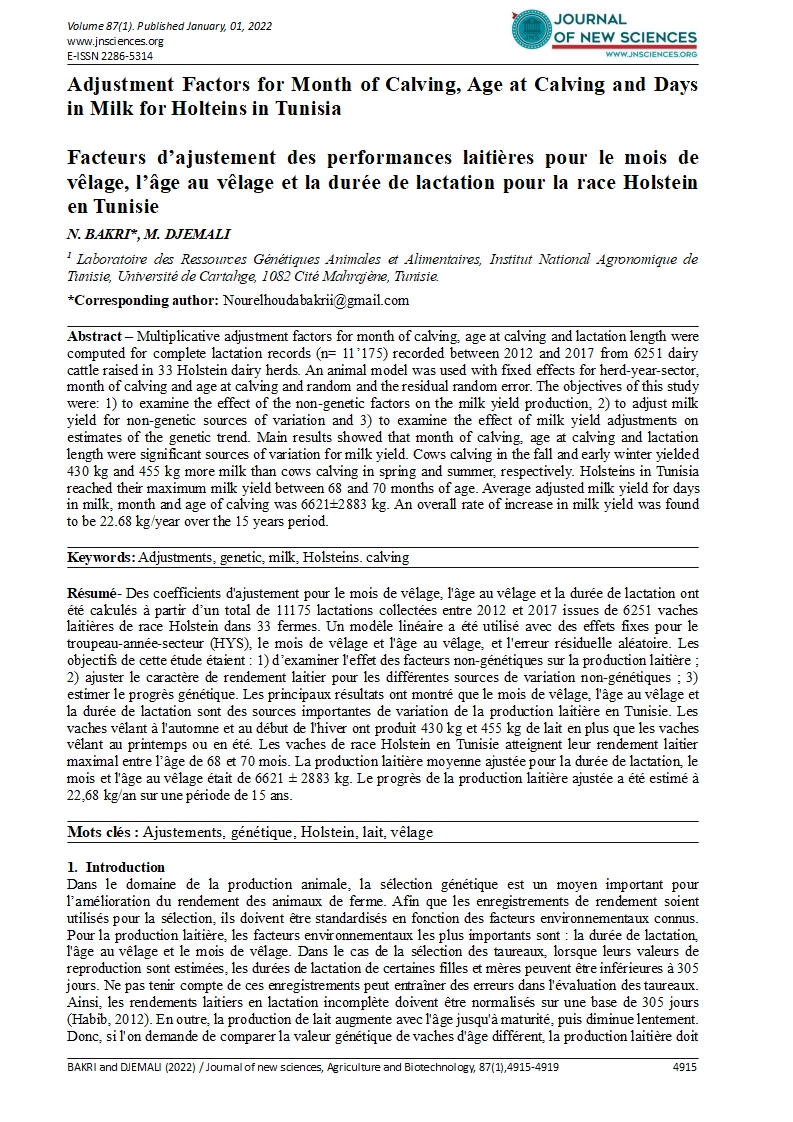- Category: Volume 87
- Hits: 2590
Impact of a sea breeze event on geochemical behavior of aerosols at a Mediterranean coast (Northern Tunisia)
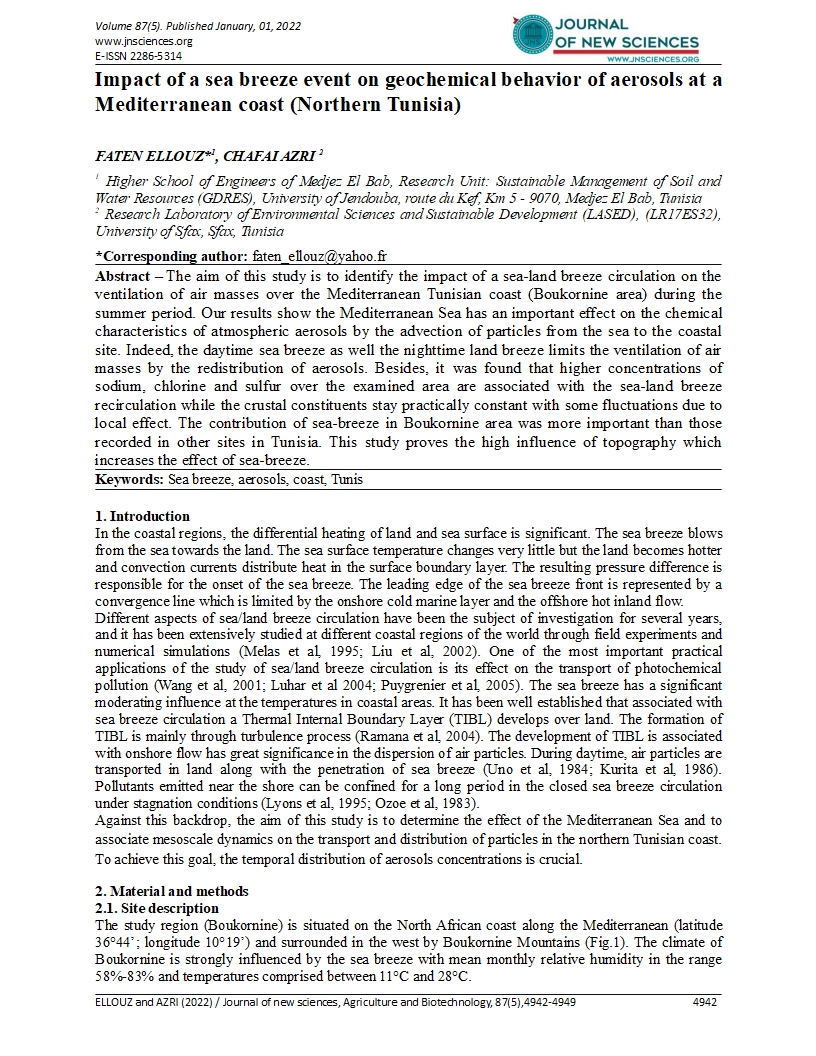
FATEN ELLOUZ1
CHAFAI AZRI 2
1 Higher School of Engineers of Medjez El Bab, Research Unit: Sustainable Management of Soil and Water Resources (GDRES), University of Jendouba, route du Kef, Km 5 - 9070, Medjez El Bab, Tunisia
2 Research Laboratory of Environmental Sciences and Sustainable Development (LASED), (LR17ES32), University of Sfax, Sfax, Tunisia
DOI: https://doi.org/10.55416/sunb.jns01.2201.08705
Abstract – The aim of this study is to identify the impact of a sea-land breeze circulation on the ventilation of air masses over the Mediterranean Tunisian coast (Boukornine area) during the summer period. Our results show the Mediterranean Sea has an important effect on the chemical characteristics of atmospheric aerosols by the advection of particles from the sea to the coastal site. Indeed, the daytime sea breeze as well the nighttime land breeze limits the ventilation of air masses by the redistribution of aerosols. Besides, it was found that higher concentrations of sodium, chlorine and sulfur over the examined area are associated with the sea-land breeze recirculation while the crustal constituents stay practically constant with some fluctuations due to local effect. The contribution of sea-breeze in Boukornine area was more important than those recorded in other sites in Tunisia. This study proves the high influence of topography which increases the effect of sea-breeze.
Keywords: Sea breeze, aerosols, coast, Tunis

